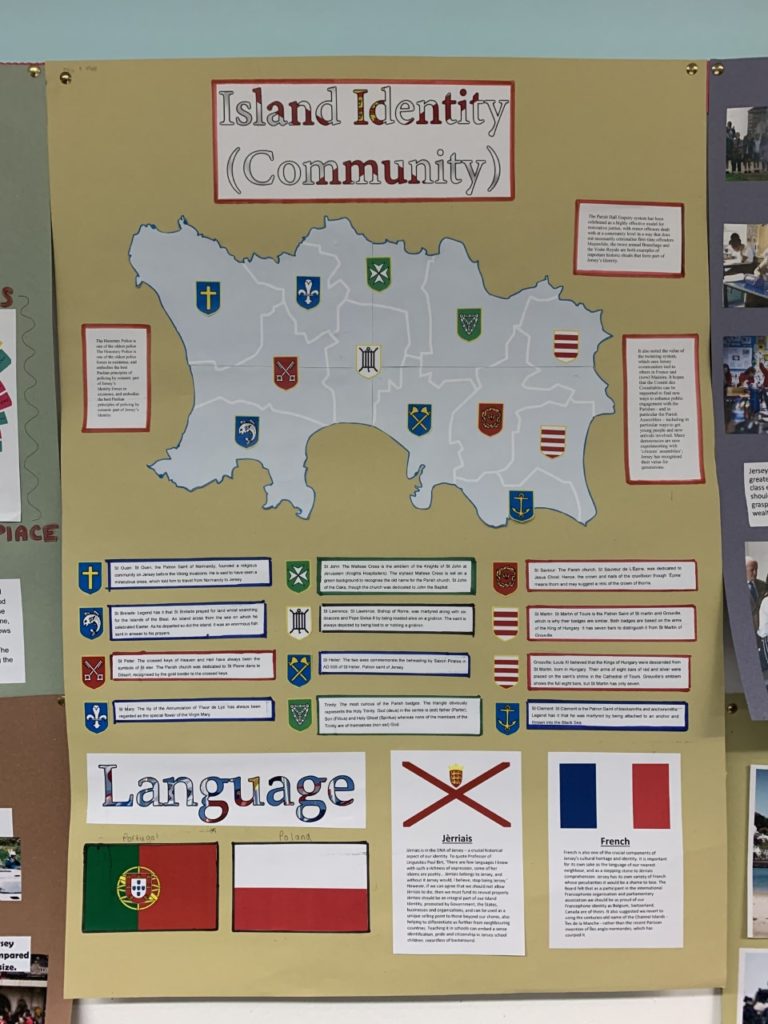In groups of two (Ollie and I) we had to produce a poster that reflects on one of the key areas of Jersey Identity, we were given “Communities” to explore.

This is our poster, our main focus was the different communities in each parishes, and how each parish is slightly different which is depicted on there way of life. For example, St. Helier is very built up and Trinity is more rural and less busy.
The notes around the outside inform the reader about the how, the Honorary Police is one of the oldest police forces in existence, and embodies the best Peelian principles of policing by consent. The Parish Hall Enquiry system has been celebrated as a highly effective model for restorative justice, with minor offences dealt with at a community level in a way that does not necessarily criminalise first-time offenders. Meanwhile, the twice annual Branchage and the Visite Royale are both examples of important historic rituals that form part of Jersey’s Identity.
Under the map, there’s information about how the parishes got their name, with the correlating symbol on the map and next to the information. For example, St. Helier and how the blue symbolising the sea, and the axes symbolising the martyrdom of Helier at the hands of Saxon pirates in 555 AD.
Finally, the part under the map is based on the different languages in Jersey such as, English, French, Portuguese, and Polish. However, the main section is about the language Jèrriais, as it is in the DNA of Jersey. It’s a crucial historical aspect of our identity. To quote Professor of Linguistics Paul Birt, ‘There are few languages I know with such a richness of expression, some of her idioms are poetry… Jèrriais belongs to Jersey, and without it Jersey would, I believe, stop being Jersey.’ However, if we can agree that we should not allow Jèrriais to die, then we must fund its revival properly. Jèrriais should be an integral part of our Island Identity, promoted by Government, the States, businesses and organisations, and can be used as a unique selling point to those beyond our shores, also helping to differentiate us further from neighbouring countries. Teaching it in schools can embed a sense identification, pride and citizenship in Jersey school children, regardless of background.
French is also one of the crucial components of Jersey’s cultural heritage and identity. It is important for its own sake as the language of our nearest neighbour, and as a stepping stone to Jèrriais comprehension. Additionally, all of the road names are in French, like, Rue Due Mielles.
